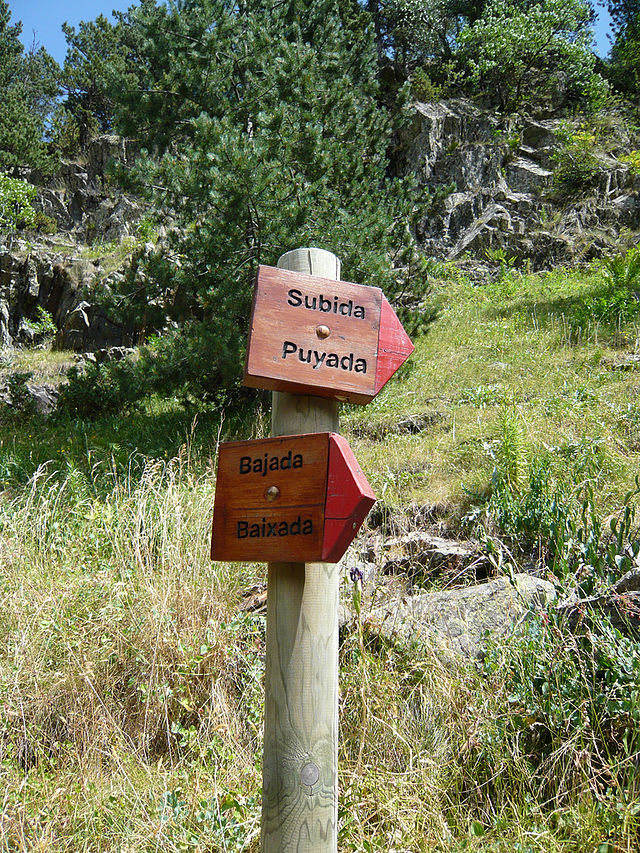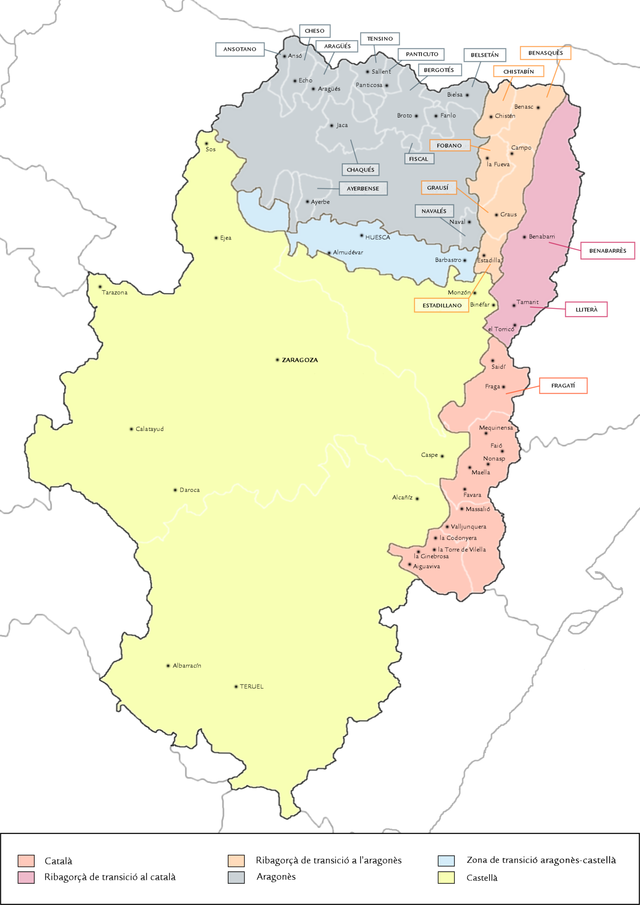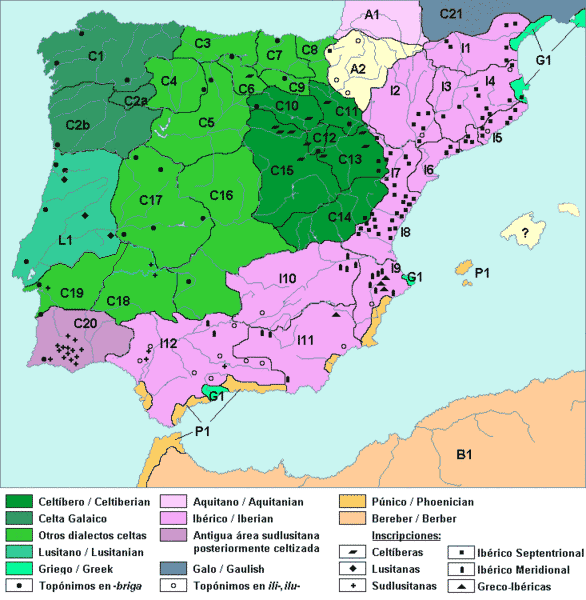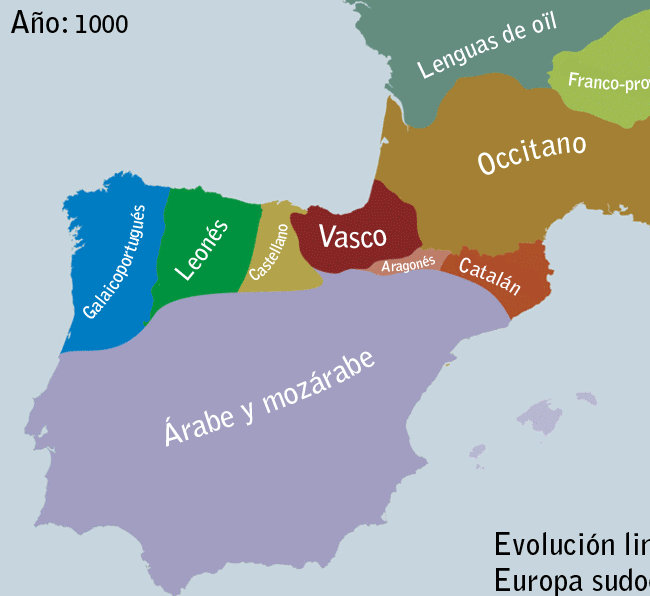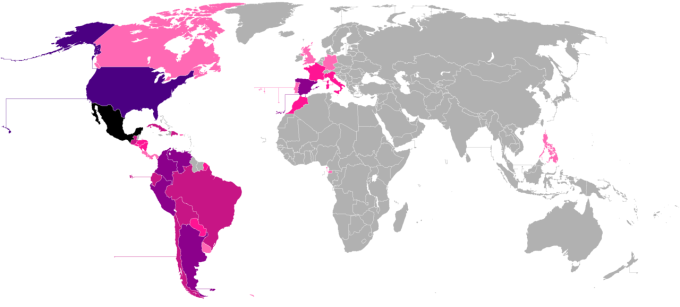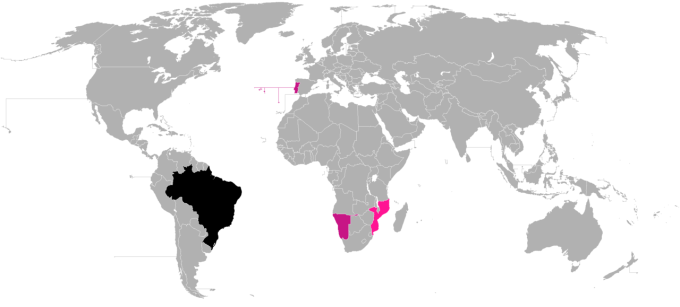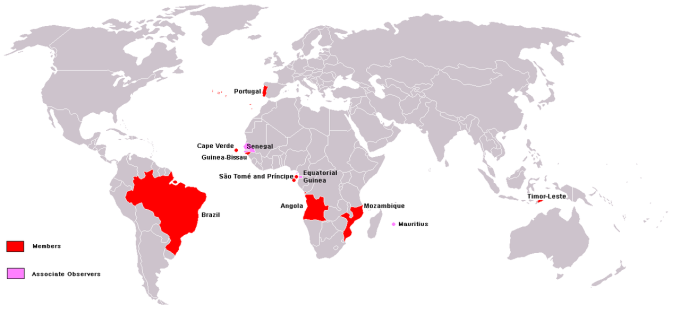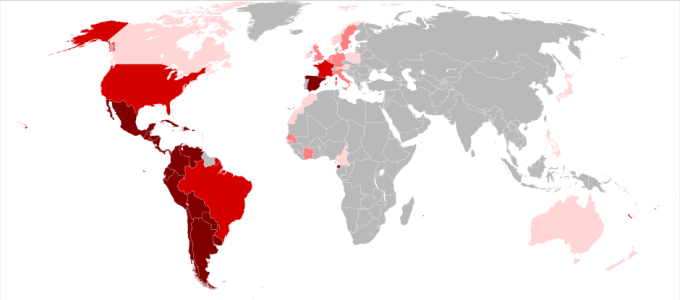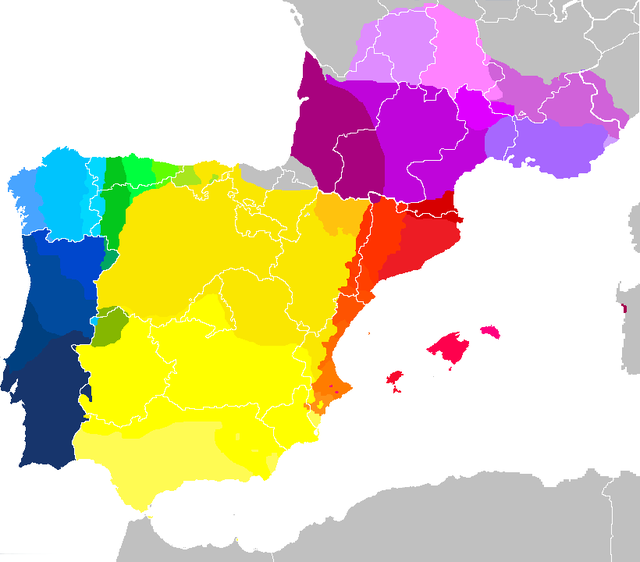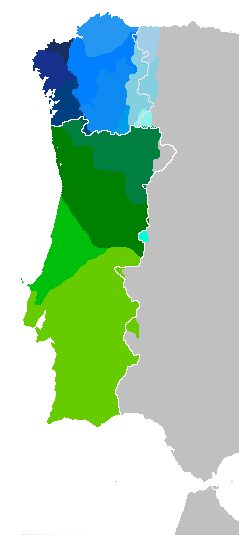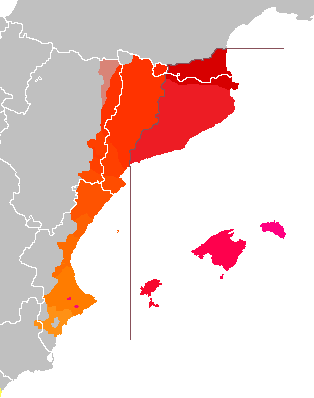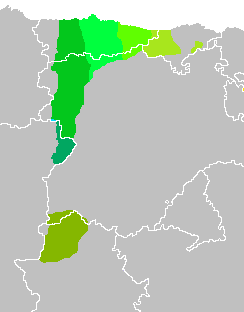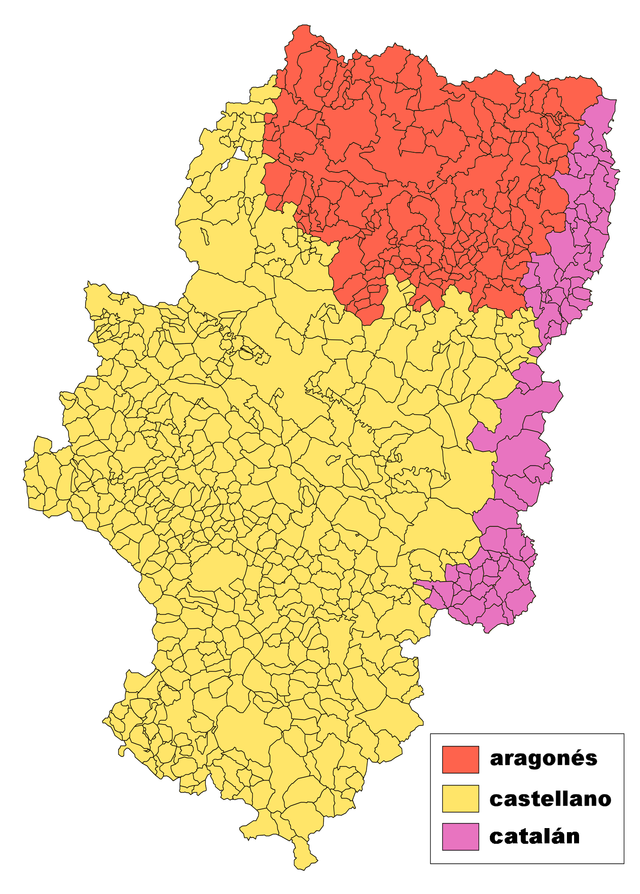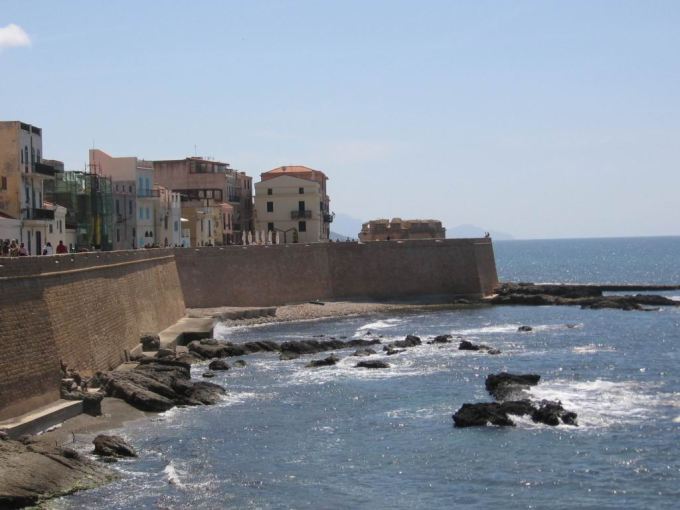VARIEDADES. CLASIFICACIÓN
Iberorromance pirenaico-mozárabe
La clasificación de Etnologue incluye un grupo de lenguas romances de la península Ibérica dudoso formado por el navarroaragonés y por el mozárabe. Aunque muchos especialistas consideran que dicha división no es un grupo válido ni encuentran demasiados argumentos para postular una especial relación entre el aragonés y el mozárabe.
El grupo pirenaico-mozárabe se suele clasificar de varias maneras, y no existe un consenso global sobre su filiación. Las teorías más aceptadas son:
- 1– La que lo clasifica como un tercer grupo dentro de las lenguas iberorromances.
- 2– la que lo sitúa como grupo separado del grupo iberorromance, incluso fuera del grupo galo-ibérico, y dentro del grupo italoccidental, del que forman también parte las citadas lenguas galo-ibéricas.
Variedades iberorromances de transición
Dada la gran cercanía que tienen las lenguas iberorromances por toda la Península Ibérica (y algunas áreas de América del sur), existen áreas donde se hablan lenguas mixtas o variedades lingüísticas de transición que presentan características mixtas a las de las lenguas iberorromances adyacentes. Estas lenguas mixtas son:
- El castrapo, que es el nombre que se le da en Galicia (España) a una variante popular del castellano hablada en dicha comunidad autónoma, caracterizada por el uso de vocabulario y de expresiones tomadas delidioma gallego que no existen en castellano. Se considera socialmente vulgar. Es frecuente en las ciudades gallegas.
- El amestáu o variante del asturiano caracterizada por una castellanización léxica, fonética y sintáctica, siendo mucho más acusada en las dos primeras. Para algunos se trata de una habla de transición entre elasturiano y el castellano, aunque son otros zunchos los que defienden que, a causa de sus estructuras sintácticas, se trata de una variante del asturiano o incluso asturiano de clase baja.
- El barranqueño (a fala de Barrancos) es una lengua mixta hablada en la localidad portuguesa de Barrancos. Es un dialecto cuya base es el portuguésalentejano con una fuerte influencia del español popular de Andalucía y de la BajaExtremadura (véase más abajo), especialmente lexicográficos,fonéticos y morfológicos. Dichos elementos a veces son extraños y hasta discordantes para un dialecto de base portuguesa.
- El portuñol, portunhol, portanhol es la mezcla de los idiomas portugués yespañol. Se da entre los hablantes de las regiones lingüísticas limítrofes entre el castellano y el portugués, muy especialmente en la fronterauruguayo–brasileña.
- El ribagorzano es un dialecto de transición entre la lengua aragonesa y lalengua catalana, que se habla en la extensión que desde la Edad Mediaocupó el Antiguo Condado de Ribagorza, es decir, desde las poblaciones de Benasque y Aneto hasta el límite sur de la actual comarca de La Litera y teniendo por límite occidental el antiguo Condado de Sobrarbe y oriental elCondado de Pallars y la zona baja del río Noguera Ribagorzana, donde arranca la Acequia de Piñana en la provincia de Lérida. En el siglo XVI la capital del Condado estaba en Benabarre, y el Condado perteneció desde tiempos medievales a los Duques de Villahermosa y por herencia, el últimoConde de Ribagorza fue el rey Felipe II.
Variedades discutidas
- El eonaviego o gallego-asturiano, fala del occidente de Asturias ogallego de Asturias (o simplemente fala para sus hablantes) es un conjunto de hablas (o falas) , cuyo dominio lingüístico se extiende, como su nombre indica, en la zona asturiana comprendida entre los ríos Eo y Navia, si bien su área de influencia abarca también zonas más orientales que el antes citado río Navia. SE discute su adscripción al grupo galaico-portugués o si se trata de un habla de transición. Este territorio se conoce comoTierras del Eo-Navia (un territorio que no coincide con la comarca del Eo-Navia).3 Hay que indicar que su formación no atiende a los mismos cánones que el de otras lenguas mixtas o de transición, pues su origen es puramenteGallego o, en todo caso Galaicoportugués; y las semejanzas con el asturiano occidental se deben a causas políticas, sociales, fronterizas y geográficas. Por ello se debe incluir siempre eleonaviego dentro de la lengua gallega y del subgrupo Galaico-Portugués.
Criollos iberorromances
En muchas áreas de África y América, particularmente en zonas donde históricamente existió un importante tráfico de esclavos y por tanto contacto de hablantes de lenguas muy diversas, se desarrollaron pidgins como medio de intercambio, que dieron lugar a numerosas lenguas criollas de base española y portuguesa:
- Criollos de base léxica española
- Criollos de base léxica portuguesa:
- Criollos mixtos:
- Papiamento7 (≈) (para algunos es un criollo de base española, aunque otros lo consideran de base protuguesa): Papiamento de Aruba,Papiamento de Bonaire, Papiamento de Curazao
- Annabonense o Fá d’Ambô, annobonense o annobonés (también llamado Fla d’Ambu y Falar de Ano Bom) es una mezcla de un criollo portugués, el forro y de español hablado en la isla de Annobón, Guinea Ecuatorial.
Árbol cladístico
El proyecto de comparación sistemática ASJP basado en la similaridad léxica medida como la distancia de levenshtein de una lista de cognados ha construido árboles cladísticos que dan una aproximación razonable al parentesco filogenético de numerosas familias. En el caso de las lenguas iberorromances mencionadas anteriormente, el árbol cladístico tiene la forma:8

| Portugués septetrional Portugués central Portugués litoral Portugués meridional Gallego occidental Gallego central Gallego oriental Gallego jalimés Mirandés Asturiano occidental o Leonés Asturiano central Asturiano oriental Montañés Alto-Extremeño |
Español septentrional Español meridional Español andaluz Aragonés Valenciano Catalán occidental Catalán oriental Catalán septentrional Alguerés Balear Gascón Languedociano Provenzal Limosín Auvernense Vivaroalpino |
|
||||||||||||||||||||||||||||||||||
______________________________:::::::::::::::::::::::……………………==========================
Ibero-Romance Pyrenean-Mozarabic
The classification of Etnologue includes a group of Romance languages of Iberia doubtful formed by navarroaragonés and the Mozarabic . Although many experts believe that this division is not a valid group or are too many arguments to postulate a special relationship between the Aragonese and Mozarabic.
- Pyrenean-Mozarabic group
- Aragonés
- Western Aragonés : Aragüesino , of Huesca , Cheso , Aisino
- Central Aragonés : Belsetano , Aragonés Vio valley , Panticuto
- Eastern Aragonese : patués or Benasques
- Southern Aragonese or Somontanés
- Navarroaragonés (†): precastellano Rioja (†), Navarre Romance (†)
- Judeoaragonés (†)
- Mozarabic (†)
- Aragonés
The Pyrenean-Mozarabic group is usually classified in various ways, and there is no global consensus on their parentage. The most accepted theories are:
- 1 – The one that classifies it as a third group within the iberorromances languages .
- 2 – which places it as a separate group of Ibero-Romance group, even outside the Gallo-Iberian group , and within the italoccidental group , which also form part of the said Gallo-Iberian languages .
Iberorromances transitional varieties
Given the close proximity with the iberorromances languages throughout the Iberian Peninsula (and some areas of South America), there are areas where mixed languages or language varieties transitional to have mixed characteristics of adjacent iberorromances languages spoken. These mixed languages are:
- The castrapo , which is the name given to it in Galicia ( Spain ) at a popular variant of Castilian spoken in this autonomous community, characterized by the use of vocabulary and expressions taken from the Galician languagethat do not exist in Castilian. It is considered socially vulgar. It is common in the Galician cities.
- The amestáu Spaniard or variant characterized by a lexical, phonetic and syntactic castellanización, being much more pronounced in the first two. For some it is a transition talks between Asturian and Castilian , although other bands are those who argue that, because of its syntactic structures, is a variant of Asturian or Asturian lower class .
- The Barrancabermeja ( a fala Canyoning ) is a mixed language spoken in the village Portuguese of Canyons . It is a dialect whose base is thePortuguese Alentejo with a strong influence of popular Spanish ofAndalusia and of LowerExtremadura (see below), especially lexical ,phonetic and morphological . These elements are sometimes strange and even discordant for a dialect of Portuguese base.
- The appreciative , portunhol , portanhol is the mixture of languages Portuguese and Spanish . It is between the speakers of the language border regions between the Castilian and Portuguese, especially in the borderUruguay – Brazil .
- The ribagorzano is a transitional dialect between the Aragonese languageand Catalan , which is spoken in the extension from the Middle Ages held the Old County Ribagorza , ie from populations Benasque and Aneto to the southern boundary of the Current region of Litter and having at ancient western boundary Sobrarbe County and Eastern County of Pallars and the lower part of the river Noguera Ribagorçana where the Acequia de Piñana starts in the province of Lleida. In the sixteenth century the capital of the county was in Benabarre , and County since medieval times belonged to theDukes of Villahermosa and heritage, the last Count of Ribagorza was KingFelipe II .
Varieties discussed
- The eonaviego or Asturian Galician , fala of western Asturias andGalicia Asturias (or just fala to its speakers) is a set of talking (or falas ), whose linguistic dominion extends, as the name suggests, in the Asturianunderstood between the rivers Eo and Navia , while its catchment area also covers areas further east than the aforementioned river Navia. SE discusses her attachment to the Galician-Portuguese group or if it is a transitional speech. This area is known as Land of the Eo-Navia (a territory that does not match the region of Eo-Navia ). 3 Note that the training does not meet the same standards than other mixed languages or transition, given their origin is purely Gallego or in any caseGalaicoportugués ; and similarities with Western Asturian due to political causes, social, and geographic borders. Therefore you should always include eonaviego within the Galician and Galician-Portuguese subgroup .
Criollos iberorromances
In many areas of Africa and America, particularly in areas where historically there was an important slave trade and thus contact of speakers of many different languages, developed pidgins as a medium of exchange, which resulted in many native languages of Spanish base and Portuguese :
- Criollos of Spanish lexical base
- Portuguese Creole lexical base:
- Mixed Creole:
- Papiamento 7 (≈) (for some it is a Spanish-based creole, although others considered protuguesa base): Papiamento in Aruba , Papiamento Bonaire , Papiamento of Curaçao
- Annabonense or Fá d’Ambo , annobonense or Annobonese (also calledFla d’Ambu and Falar Ano Bom ) is a mixture of Portuguese Creole , thelining and Spanish spoken on the island of Annobón , Equatorial Guinea .
Cladistic tree
The draft systematic comparison ASJP based on lexical similarity measured as the distance levenshtein a list of cognates has built cladistic trees that give a reasonable approximation of phylogenetic relationships of large families. In the case of iberorromances languages mentioned above, the cladistic tree has the form: 8

| Portuguese septetrional Central Portuguese Portuguese coastal Portuguese South Western Gallego Gallego Central Eastern Gallego Gallego jalimés Mirandés or West Asturian Leonese Asturian Central Asturian eastern Mountaineer High-Extremadura |
Northern Spanish Spanish Southern Spanish Andalusian Aragonés Valenciano Western Catalan Catalan Eastern Catalan northern Algherese Balearic Gascón languedociano Provencal Limousin Auvernense Vivaroalpino |
Fuente:
|

